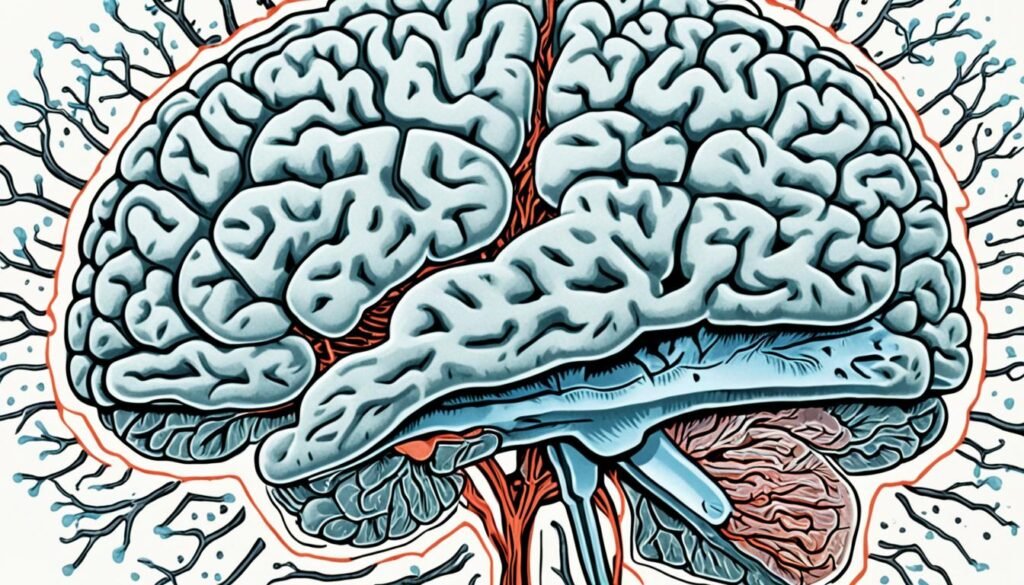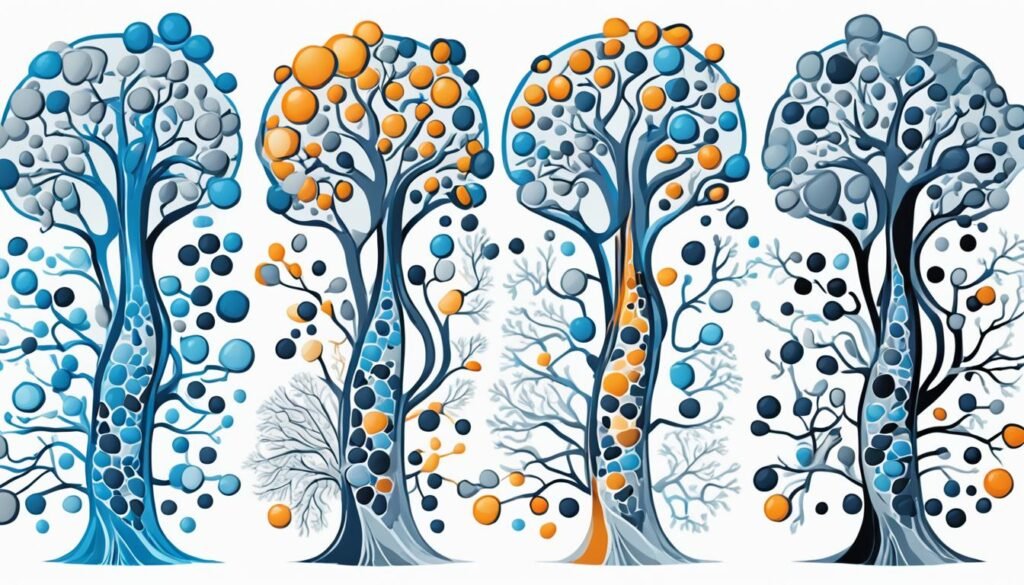Have you noticed a child suddenly losing skills they once had? Or maybe they start walking strangely, slurring their speech, or acting differently? These might not be “just a phase.” They could be early leukodystrophy symptoms, something that should never be ignored.
Leukodystrophy is rare, but when it strikes, it affects something crucial: the white matter in our brain. That white matter helps send messages between the brain and body. If it breaks down, things can go wrong fast.
In this blog, we’ll help you understand how to spot the leukodystrophy symptoms early, how doctors diagnose it, and what you can do next.
What Is Leukodystrophy?
Leukodystrophy is a group of genetic conditions that damage the brain’s white matter, the part responsible for communication between nerve cells. This happens due to problems with the myelin sheath, which acts like insulation around nerves. When it breaks down, signals in the brain get delayed or lost.
This condition is considered a white matter disease. It’s rare, affecting about 1 in every 7,000 live births globally. While it’s genetic, symptoms may appear in infancy, childhood, or even adulthood.
Unlike other conditions like cerebral palsy or autism, leukodystrophy symptoms usually involve steady motor skill regression, cognitive decline, and worsening physical coordination over time. It’s a progressive neurological condition that worsens unless diagnosed and managed early
Types of Leukodystrophy
There are more than 50 types of leukodystrophies. Each is due to a specific gene problem, impacting myelin growth.
| Type | Age of Onset | Key Symptoms | Progression Rate |
|---|---|---|---|
| Metachromatic Leukodystrophy (MLD) | 1–4 yrs | Muscle weakness, speech issues | Rapid |
| Krabbe Disease | 6 months | Irritability, fever without cause | Fast |
| Adrenoleukodystrophy (ALD) | 4–10 yrs | Vision loss, hormone imbalance | Variable |
| Canavan Disease | Infancy | Enlarged head, poor head control | Rapid |
| Pelizaeus-Merzbacher | Infancy | Tremors, abnormal eye movements | Slow |
Each type has unique signs but shares the pattern of myelin loss, leading to widespread effects.
Primary Signs and Early Leukodystrophy Symptoms
Spotting early signs can make all the difference. Symptoms vary based on age. Let’s break it down.
Early Symptoms in Infants and Toddlers
Babies or toddlers may not hit normal growth and learning milestones. Some key signs include:
- Delayed developmental milestones: like late crawling, standing, or speaking.
- Poor muscle tone or hypotonia: baby feels “floppy” when picked up.
- Feeding or swallowing difficulties: constant choking or gagging.
- Unusual eye movements: rapid flickering, crossed eyes, or no eye tracking.
- Seizures: sudden jerky movements or body stiffness.
These early leukodystrophy symptoms can be easy to mistake for other issues, so medical evaluation is crucial.

Symptoms in Older Children and Teens
Older children who were developing normally may suddenly start slipping. Look out for:
- School performance going down unexpectedly.
- Losing the ability to speak or move.
- Behavior changes like aggression or withdrawal.
- Wetting the bed or loss of bathroom control.
These are neurological warning signs. Don’t wait to seek medical help if you notice any of these.
Adult-Onset Leukodystrophy Symptoms
Some types show up in adulthood, often overlooked as mental health issues. Watch for:
- Trouble with thinking or memory, a sign of cognitive decline in children when it begins early.
- Wobbly walking or balance issues.
- Depression, confusion, or seeing things.
- Shaky hands or poor coordination.
Adults may get misdiagnosed with psychiatric conditions before the correct diagnosis is made.
Table of Contents
ToggleDiagnosing Leukodystrophy
Diagnosing leukodystrophy requires many steps. Doctors look at medical background and family health history first. Then, they perform physical and nerve tests along with advanced imaging like MRIs. Genetic tests play a big role. This whole process pinpoints the exact type of leukodystrophy. It also helps plan the best care.
Medical and Family History
Doctors begin by checking your or your child’s medical past and family info. This detective work often reveals genetic clues or early disease signs. Information about learning progress, nerve symptoms, and issue rates helps with the diagnosis.
Imaging Tests
MRI scans are key in spotting leukodystrophy. They show certain types of brain white matter issues. Other tests, like CT scans, may also be used to look closer at the brain and nerves.
Genetic Testing
Genetic tests are a must for a final leukodystrophy diagnosis, including finding the specific genetic change. Doctors often suggest DNA tests, using full exome sequencing or gene panels. Knowing the genetic roots of the disease is crucial for treatment planning and understanding how the disease might progress.
Diagnosing leukodystrophy is complex, especially early on when signs are faint. Plus, new types are still being found. Your medical team will do their best to reach a clear diagnosis. This is the crucial beginning to finding the right care and treatment for leukodystrophy symptoms, leukodystrophy disease, and leukodystrophy treatment.

Leukodystrophy Treatment Options
There’s no current cure for most leukodystrophy types. Yet, a mix of treatments can help. They manage symptoms and try to slow the disorder’s progress. The main goal of treatment is to give supportive care. This meets each person’s specific needs.
Symptomatic and Supportive Care
Treating leukodystrophy often involves handling symptoms and giving care. Medications are used for issues like seizures or behavior. Therapies such as physical, occupational, and speech are vital. They maintain functional abilities and life quality.
Eating support, educational adjustments, and fun activities are essential. They complete a full care plan.
Bone Marrow Transplantation
For some, like cerebral ALD, a bone marrow transplant might work. It slows the disease, but mainly if done early. Not everyone can get this treatment. It depends on their type of leukodystrophy and when they were diagnosed.
New treatment paths are being researched. This includes enzyme replacement and gene therapy. These methods are being tested in clinical trials. They might offer new hopes of managing these severe disorders in the future.
Living with Leukodystrophy
Living with leukodystrophy, a rare group of genetic disorders, brings complex challenges. These affect the brain’s white matter. To cope, people need medicines, therapies, and special tools.
Managing Symptoms
Leukodystrophy makes daily life harder as it progresses. It can lead to spasticity, seizures, trouble feeding, and moving. Medications can help, as well as physical and speech therapies.
Using devices like wheelchairs and communication aids increases day-to-day independence. They make life easier despite the hardships.
Support and Resources
Families facing leukodystrophy often find it tough. But, help is available. Special care teams, palliative services, and advocacy groups offer support.
These resources provide info, emotional help, and connections to others in similar situations. They aim to improve the lives of those with leukodystrophy.

Ongoing Research and Clinical Trials
Researchers are looking into leukodystrophies to understand them better. They aim to identify more treatment options. The National Institute of Neurological Disorders and Stroke (NINDS) is at the forefront of this effort. It seeks to increase our basic brain and nervous system knowledge. This knowledge helps in lessening the impact of neurological diseases such as leukodystrophy.
NINDS works with other NIH groups on research and clinical trials. These trials look into treatments like bone marrow transplantation, enzyme replacement, and gene therapy. While a cure for most leukodystrophies is yet to be found, ongoing research is focused. It aims to slow down the diseases and make life better for those suffering from leukodystrophy.
Leukodystrophy Prognosis
The outlook for people with leukodystrophy can differ. This depends on the type and how severe it is. Most types get worse over time. But, if caught early and managed well, some may keep a better life for longer.
For a type like cerebral adrenoleukodystrophy, getting help early matters a lot. A bone marrow transplant can slow down the disease heading to the future. Yet, it won’t fix the harm already done.
The chance of getting better depends on the leukodystrophy type and when it’s found. Treatment options also play a big role.

When to See a Neurologist
If a child shows multiple signs listed above or is losing skills, it’s time to consult a specialist. Leukodystrophy symptoms often get dismissed at first. But quick diagnosis can change the outcome.
You should seek help if:
- Skills are lost suddenly.
- Symptoms get worse week by week.
- There’s a family history of rare conditions.
A pediatric neurologist or adult neurologist will order key tests like:
- Brain MRI for leukodystrophy – shows white matter damage.
- Genetic testing.
- Nerve conduction studies.
Never ignore red flags. Early detection can lead to better care.
Dr. Chandril Chugh’s Message: Don’t Wait. Act Early.
If your child or loved one is showing leukodystrophy symptoms, don’t wait for “just one more week.” Every moment matters. As a US-trained, board-certified neurologist, I’ve seen how early diagnosis can save a child’s ability to speak, move, or even survive.
Book a consultation with me today. Let’s find answers before symptoms get worse.
Conclusion
A key first step in dealing with leukodystrophy is recognizing its symptoms. This allows for early intervention and better management. Despite the difficulties in early diagnosis, understanding signs like developmental regression and issues with motor skills is crucial.
As the disease moves forward, these signs can get worse. This impacts how a person can move, talk, see, hear, and think. Sadly, there’s no cure for most leukodystrophies yet. But, specialized care can help a lot. It can manage symptoms, slow down the disease, and make life better. Also, ongoing research looks into new treatments, which brings hope.
Learning about leukodystrophy’s early detection and comprehensive care is key. This helps those who are affected. It gives them the support they need on their journey.
FAQ
What are the symptoms of leukodystrophy?
Leukodystrophy symptoms include a slow decline in function. This can lead to trouble with muscle tone, balance, and more. Each person’s symptoms can be different based on their type of leukodystrophy.
How is leukodystrophy diagnosed?
To diagnose leukodystrophy, doctors look at medical history and do physical exams. They also use imaging tests like MRI. Genetic tests are crucial to pinpoint the specific genetic mutation causing the illness.
What are the treatment options for leukodystrophy?
Treating leukodystrophy is about managing the symptoms and providing support. This includes medications, therapies, and sometimes special equipment. In some cases, early bone marrow or stem cell transplants might be possible.
How can individuals and families cope with living with leukodystrophy?
Families and individuals can cope by getting help from a team of specialists. They should also reach out to support groups and patient advocacy organizations. These steps can make the challenge of leukodystrophy easier to face.
What is the prognosis for individuals with leukodystrophy?
The outlook for leukodystrophy depends on the type and how severe it is. Most types steadily get worse over time. Early and proper symptom management is key to a better quality of life. Unfortunately, there is no known cure for most types.
Source Links
- https://www.chop.edu/conditions-diseases/leukodystrophy
- https://www.ninds.nih.gov/health-information/disorders/leukodystrophy
- https://www.ncbi.nlm.nih.gov/pmc/articles/PMC10410460/
- https://www.webmd.com/brain/leukodystrophy-types
- https://rarediseases.org/rare-diseases/leukodystrophy/
- https://www.mayoclinic.org/diseases-conditions/metachromatic-leukodystrophy/symptoms-causes/syc-20354733
- https://www.aurorahealthcare.org/services/neuroscience/neurology/neurological-conditions/neuromuscular-disorders/leukodystrophy
- https://www.ncbi.nlm.nih.gov/pmc/articles/PMC10770198/
- https://rarediseases.info.nih.gov/diseases/6895/leukodystrophy
- https://www.ncbi.nlm.nih.gov/pmc/articles/PMC10117409/
- https://www.ncbi.nlm.nih.gov/pmc/articles/PMC5964825/
About The Author

This article is medically reviewed by Dr. Chandril Chugh, Board-Certified Neurologist, providing expert insights and reliable health information.
Dr. Chandril Chugh is a U.S.-trained neurologist with over a decade of experience. Known for his compassionate care, he specializes in treating neurological conditions such as migraines, epilepsy, and Parkinson’s disease. Dr. Chugh is highly regarded for his patient-centered approach and dedication to providing personalized care.
→ Book a consultation to discover which remedies suit your needs best.




